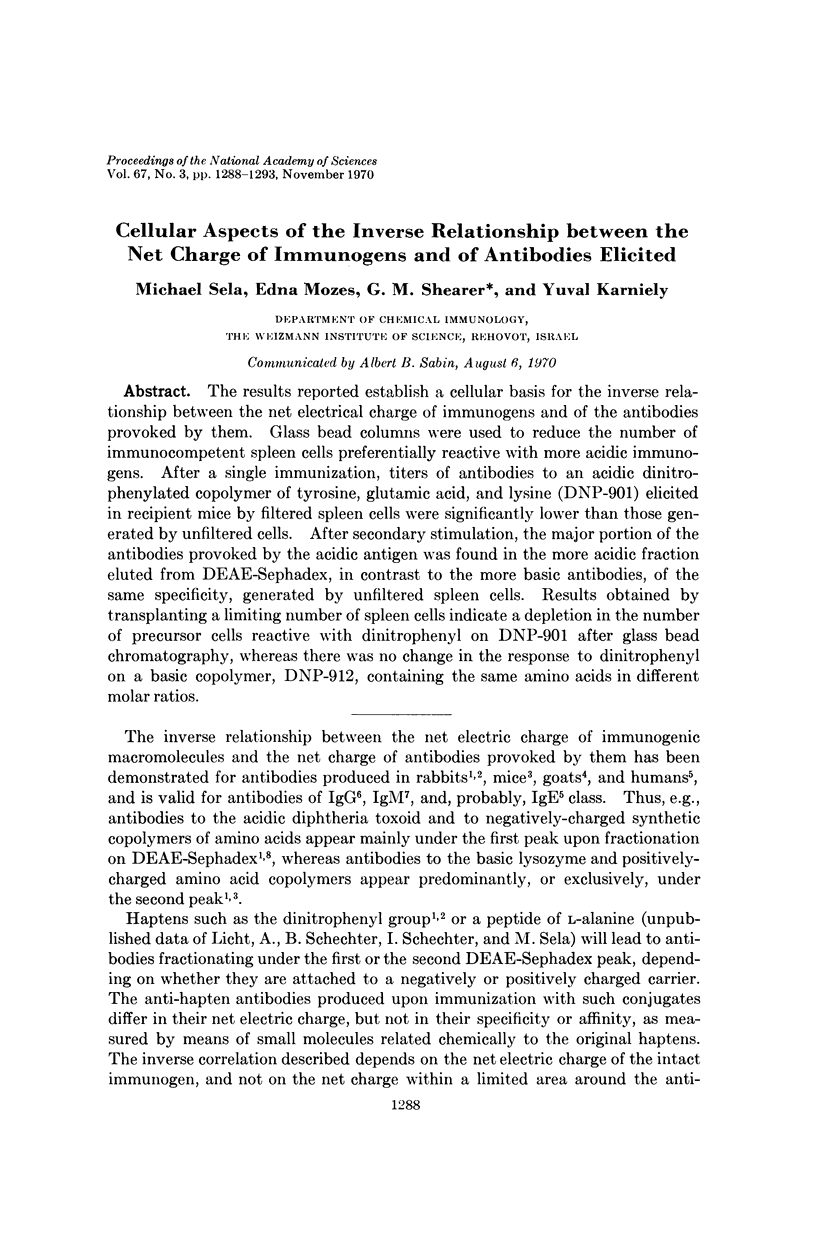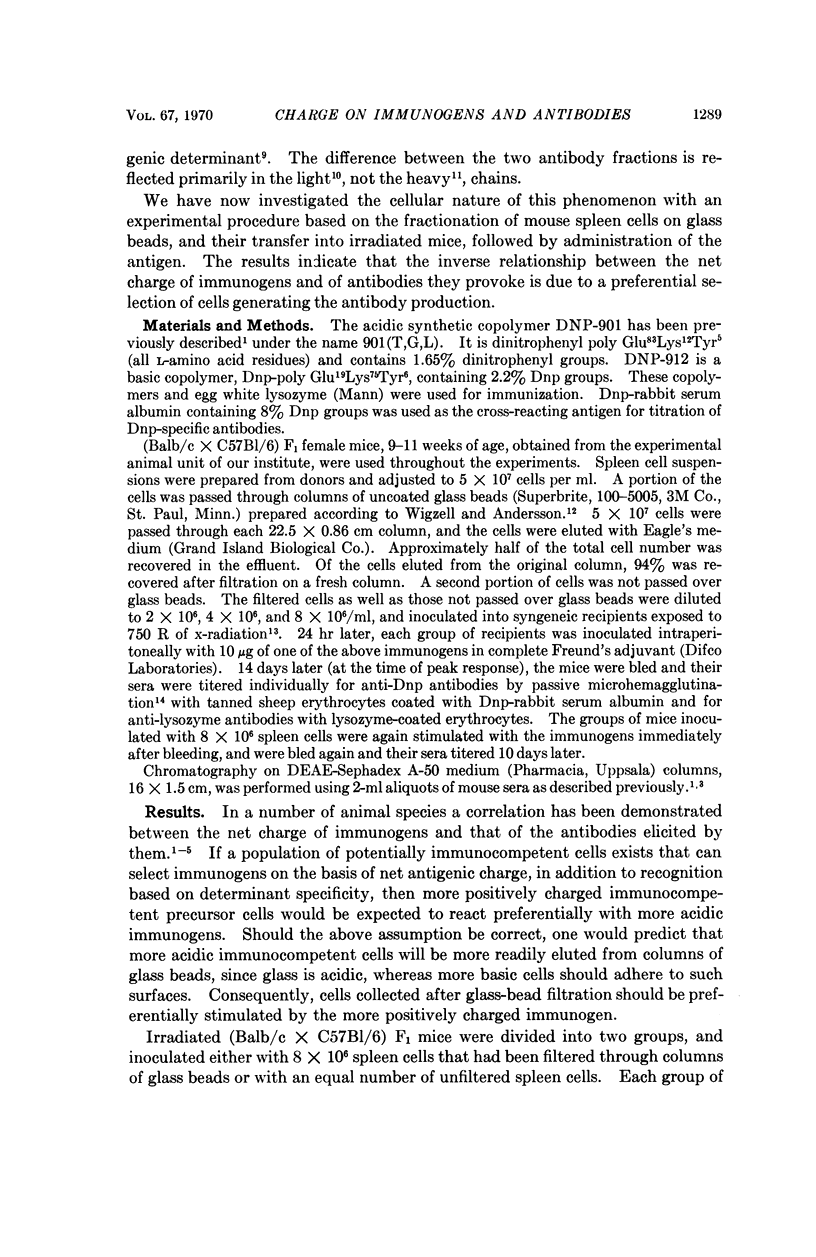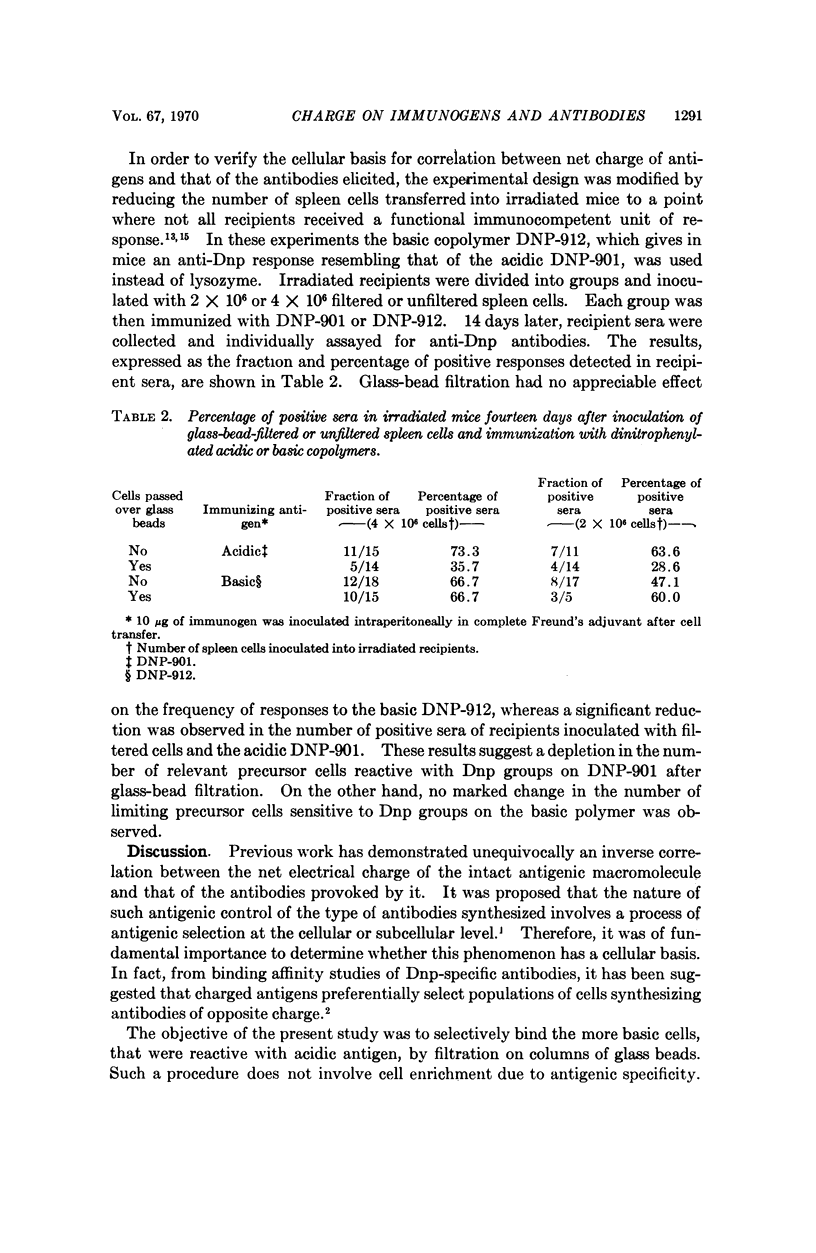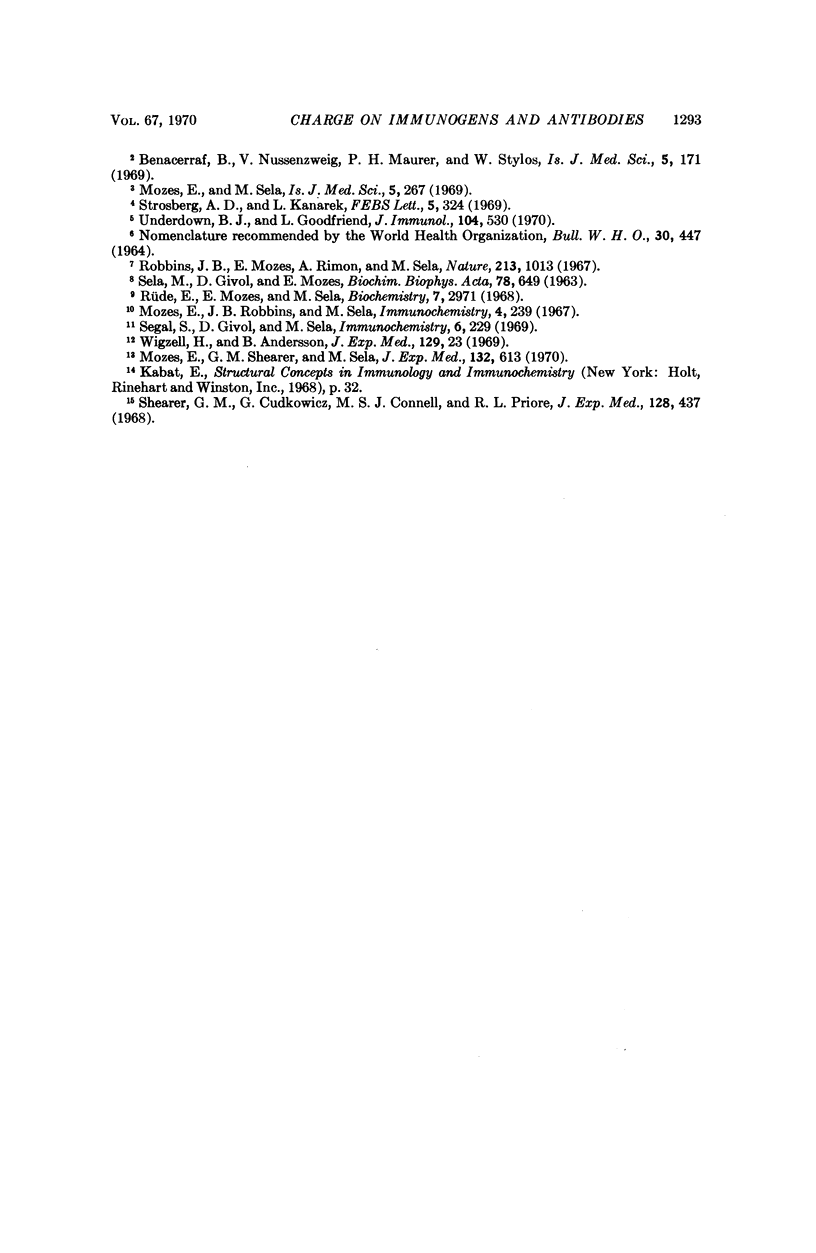Abstract
The results reported establish a cellular basis for the inverse relationship between the net electrical charge of immunogens and of the antibodies provoked by them. Glass bead columns were used to reduce the number of immunocompetent spleen cells preferentially reactive with more acidic immunogens. After a single immunization, titers of antibodies to an acidic dinitrophenylated copolymer of tyrosine, glutamic acid, and lysine (DNP-901) elicited in recipient mice by filtered spleen cells were significantly lower than those generated by unfiltered cells. After secondary stimulation, the major portion of the antibodies provoked by the acidic antigen was found in the more acidic fraction eluted from DEAE-Sephadex, in contrast to the more basic antibodies, of the same specificity, generated by unfiltered spleen cells. Results obtained by transplanting a limiting number of spleen cells indicate a depletion in the number of precursor cells reactive with dinitrophenyl on DNP-901 after glass bead chromatography, whereas there was no change in the response to dinitrophenyl on a basic copolymer, DNP-912, containing the same amino acids in different molar ratios.
Full text
PDF





Selected References
These references are in PubMed. This may not be the complete list of references from this article.
- Benacerraf B., Nussenzweig V., Maurer P. H., Stylos W. Relationship between the net electrical charge of antigens and specific antibodies. An example of selection by antigen of cells producing highest affinity antibody. Isr J Med Sci. 1969 Mar-Apr;5(2):171–176. [PubMed] [Google Scholar]
- Mozes E., Robbins J. B., Sela M. Heterogeneity of the light chains of rabbit immunoglobulin G fractions and of a series of antibodies directed towards antigens of differing complexity. Immunochemistry. 1967 Jul;4(4):239–245. doi: 10.1016/0019-2791(67)90185-1. [DOI] [PubMed] [Google Scholar]
- Mozes E., Sela M. Resolution of mouse and human immunoglobulin G into two fractions by chromatography on diethylaminoethyl-sephadex. Relation of mouse antibody type to the antigen charge. Isr J Med Sci. 1969 Mar-Apr;5(2):267–270. [PubMed] [Google Scholar]
- Mozes E., Shearer G. M., Sela M. Cellular basis of the genetic control of immune responses to synthetic polypeptides. I. Differences in frequency of splenic precursor cells specific for a synthetic polypeptide derived from multichain polyproline ((T,G)-Pro--L) in high and low responder inbred mouse strains. J Exp Med. 1970 Oct 1;132(4):613–622. doi: 10.1084/jem.132.4.613. [DOI] [PMC free article] [PubMed] [Google Scholar]
- Rüde E., Mozes E., Sela M. Role of the net electrical charge of the complete antigen in determining the chemical nature of anti-p-azobenzenearsonate antibodies. Biochemistry. 1968 Aug;7(8):2971–2975. doi: 10.1021/bi00848a038. [DOI] [PubMed] [Google Scholar]
- SELA M., GIVOL D., MOZES E. RESOLUTION OF RABBIT GAMMA-GLOBULIN INTO TWO FRACTIONS BY CHROMATOGRAPHY ON DIETHYLAMINOETHYL-SEPHADEX. Biochim Biophys Acta. 1963 Dec 13;78:649–657. doi: 10.1016/0006-3002(63)91031-x. [DOI] [PubMed] [Google Scholar]
- Segal S., Givol D., Sela M. Disc electrophoresis patterns of the Fd fragment of rabbit immunoglobulin fractions and of purified antibodies. Immunochemistry. 1969 Mar;6(2):229–234. doi: 10.1016/0019-2791(69)90159-1. [DOI] [PubMed] [Google Scholar]
- Sela M., Mozes E. Dependence of the chemical nature of antibodies on the net electrical charge of antigens. Proc Natl Acad Sci U S A. 1966 Feb;55(2):445–452. doi: 10.1073/pnas.55.2.445. [DOI] [PMC free article] [PubMed] [Google Scholar]
- Shearer G. M., Cudkowicz G., Connell M. S., Priore R. L. Cellular differentiation of the immune system of mice. I. Separate splenic antigen-sensitive units for different types of anti-sheep antibody-forming cells. J Exp Med. 1968 Sep 1;128(3):437–457. doi: 10.1084/jem.128.3.437. [DOI] [PMC free article] [PubMed] [Google Scholar]
- Strosberg A. D., Kanarek L. Immunochemical studies on hen's egg-white lysozyme Effect of formylation of the tryptophan residues. FEBS Lett. 1969 Dec 30;5(5):324–326. doi: 10.1016/0014-5793(69)80347-9. [DOI] [PubMed] [Google Scholar]
- Underdown B. J., Goodfriend L. Correlation of charge properties of human reaginic antibodies with charge of the corresponding allergens. J Immunol. 1970 Feb;104(2):530–533. [PubMed] [Google Scholar]
- Wigzell H., Andersson B. Cell separation on antigen-coated columns. Elimination of high rate antibody-forming cells and immunological memory cells. J Exp Med. 1969 Jan 1;129(1):23–36. doi: 10.1084/jem.129.1.23. [DOI] [PMC free article] [PubMed] [Google Scholar]


